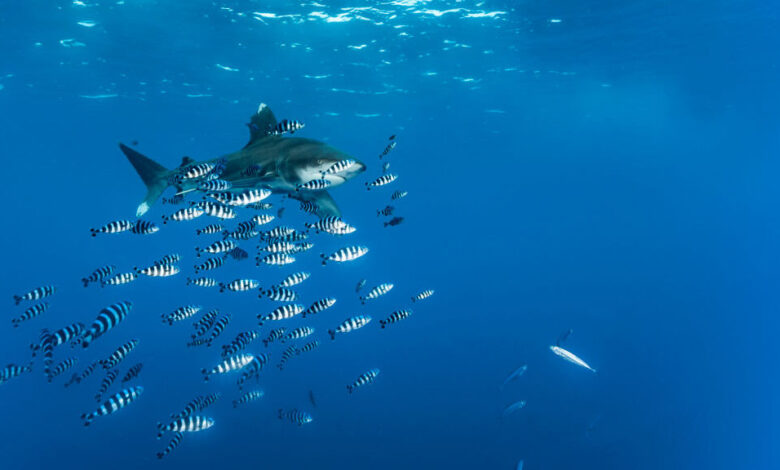
A oceanic whitetip shark (Carcharhinus longimanus), also called Oceanic shark, swims close to the surface followed by pilot-fish (Naucrates ductor), on December 5, 2007 around the Brothers Islands, off Egypt, Red Sea. Photo Credit: Alexis Rosenfeld/Getty Images
Environment USAThe Future of Marine Protection Looks Bright: First-Ever High Seas Treaty, Signed
With the international community stepping up its game to turn the “Climate Emergency, Biodiversity Loss and Pollution” ship around, countries have signed a first-of-its-kind high seas treaty in New York, United States, in a will to reach the target of protecting 30% of land and sea by 2030.
The high seas treaty “brings marine protection into the 21st century”, says Li Shuo, a policy adviser for Greenpeace east Asia. “Building on the recent success of biodiversity Cop15, the high seas treaty will help fulfill the 30×30 target. This success indicates that environmental progress and multilateralism can still triumph despite challenging geopolitical conditions.”
Following Cop15 (a biodiversity summit held in Montreal, Canada in late 2022), negotiations took place in New York, resulting in the high seas treaty, the second big environmental deal in three months. World leaders now know exactly what to do to avoid disaster in the next decades as maintaining a livable planet for future generations is on the line. For the target to protect 30% of land and sea by 2030 to be achieved, other agreements similar to this latest treaty must be signed. The international community is encouraged to come together with the Montreal Protocol on the ozone layer as a prime “encouraging example of what the world can achieve when we work together,” as states the UN secretary general, António Guterres.



